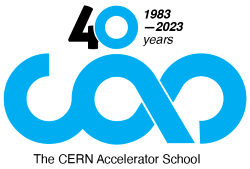Speaker
Description
"S.Rudys, V.Kalendra, S.Svirskas, S.Balciunas, R.Grigalaitis, S.Lapinskas, J.Banys
Faculty of Physics, Vilnius University, Vilnius, Lithuania
web site: http://www.lms.ff.vu.lt
The dielectric response of materials provides information about the orientational adjustment of dipoles and the translational adjustment of mobile charges present in a dielectric medium in response to an applied electric field. Microwave and terahertz dielectric spectroscopy of ferroelectrics and related materials enables the independent determination of the dielectric permittivity and loss in the dispersion region, as well as the parameters of the soft modes related to phase transitions. Besides scientific purposes, microwave dielectric measurements are of increasing importance in telecommunications-related applications and the design of microwave circuit components. These applications include imaging radars, guidance systems, surveillance and secure communications. The magnetic properties are also of crucial importance. Dielectric and magnetic parameters fully characterize the manner in which electromagnetic waves propagate within the medium. The difficulties of making measurements on a wide range of materials over a wide frequency (and temperature) range have led to the development of various direct and indirect methods. At microwave frequencies, the direct single-frequency methods were enriched in the recent years with more convenient broad band frequency domain dielectric spectroscopy (FDDS), time – domain spectroscopy (TDS), Fourier transform spectroscopy (FTS). Computer controlled spectrometers are now the norm in dielectric spectroscopy. Computers allow the computation of electromagnetic fields in entirely new measurement geometries and the use of numerical analysis in the direct measurement process. The use of such spectrometers is now one of the most fruitful factors in new approaches to microwave dielectric spectroscopy. Each investigator employs the method adequate for the size and shape of a sample. The most important problem now is the rigorous mathematical solution of the microwave interaction with the samples in various geometries. Although there is now complete overlap and coverage of the radio frequency to the infrared band, the different experimental methods based on coaxial, waveguide, and resonator and free–space technique are still divided and will be presented. Examples of various ferroelectric, relaxor and other materials dielectric spectroscopy results will be presented."
